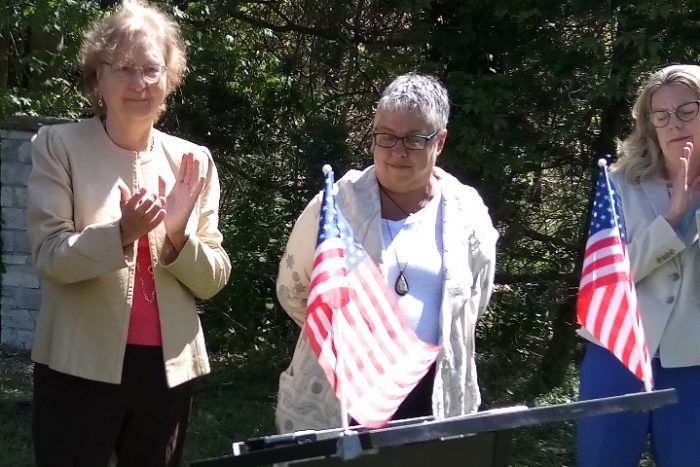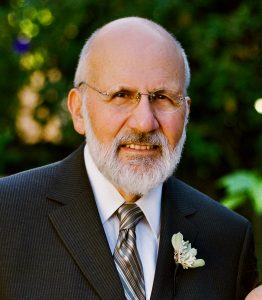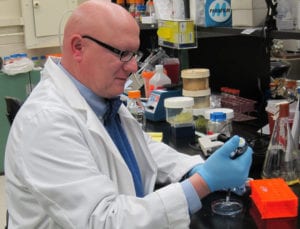Cindy M. Smith, a Stony Brook resident who helped organize community efforts against Gyrodyne’s development efforts in St. James, died Tuesday, Feb.15, in Manhattan. She was 61 and had leukemia.

A steadfast supporter of the arts, a dedicated environmentalist, and a proud advocate of the North Fork’s cultural heritage, Smith became a civic activist in order to protect the community’s quality of life, said her husband and business partner, Warren Strugatch.
“Cindy linked the Flowerfield project with increased traffic congestion,” Strugatch said. “The more she looked into the planning, the more she believed there was no planning. She hated politicians building a sewage treatment plant over Stony Brook Harbor and no one stopping them.”
To help civic leaders speak in a unified voice, Smith organized the Greater Stony Brook Action coalition in 2017. “The coalition came out of our conversations about Jane Jacobs and how she confronted Robert Moses in the 1960s,” said Strugatch. “Cindy enrolled eight civic organizations in the new coalition. Eight isn’t a huge number, but 30,000 is. That’s how many residents were enrolled in the civics, collectively. Now, politicians had to listen.”
Smith spoke exhaustively about how the planned development would snarl traffic up and down the North Shore. “Cindy understood that medical facilities are the worst traffic generators you can imagine,” said Strugatch. “Thousands of people come in and out at all hours. Cindy pressed the fact that traffic would be at perpetual standstill.”
Smith also researched sewage runoff, toxic sewage effluent, emergency vehicle access, and damage to historical continuity and quality of life.
“Cindy didn’t think the project was good for either Brookhaven or Smithtown,” said Strugatch. “She felt public opinion would turn when people learned the truth. That’s exactly what happened.”
James Bouklas, president of We Are Smithtown, said: “Stony Brook and Smithtown residents have lost a tough fighter and a true friend. She worked tirelessly to sound the alarm about how our water, traffic, and quality of life are in danger.”
Friends and allies describe Smith as a big supporter of the arts, which she often called an economic driver. While confronting Gyrodyne over its development plans, she applauded the company’s support for onsite arts programs such as the Atelier studio and the Brick ceramics studio. She was a regular at studio openings, often leaving with spur-of-the-moment purchases.
“Cindy and I became friends after running into each other at community art exhibitions, concerts and gallery openings,” said Suffolk County Legislator Kara Hahn. “Cindy was passionate about the arts and recognized the positive impact local artists have on enriching our community, our cultural experience and unique sense of place.”
Born in Smithtown in 1960, Smith was the daughter of Lawrence Smith Sr, who owned auto restoration shops, and Patricia (Slattery) Smith, a homemaker who eventually worked in the home mortgage industry. She and her younger brother Larry distributed Pennysavers after school in various neighborhoods, earning money their parents put toward college tuition.

As a girl, Cindy attended Sweetbriar Elementary School and Avenue Junior High School. She graduated from newly constructed Smithtown West in 1979. Throughout high school she volunteered at the Smithtown Public Library and other community programs.
As an undergrad, Smith attended Hofstra University where she studied marketing and communications. She interned at the Smithtown News under editor Vicky Katz, who later taught at Stony Brook University. “Everything she knew about communications, she attributed to Vicky,” Strugatch said.
After graduating Hofstra, she took the first of a series of small company marketing jobs. Blockbuster Entertainment hired her in 1985 as Northeast marketing director. Her experience promoting the 50th anniversary videocassette release of “The Wizard of Oz” provided her favorite career story.
Responsible for getting major media coverage of the anniversary release, Smith led a tour of midtown Manhattan for several actors who’d played Munchkins in the film. At nearly six feet tall, Smith towered over her charges. The appearance at Carnegie Deli produced major media coverage.
When Blockbuster’s growth slowed down, Smith was hired by the EGC Group, a marketing and advertising firm. As a vice president she handled accounts of Brother International, Häagen-Dazs, the International Flower Bulb Center, the Long Island Aquarium, and the Oyster Festival. “Everything I do is about customer experience,” she once said.
After EGC, Smith partnered with her husband, Warren Strugatch, creating a consulting organization called Inflection Point Associates. The company helped clients improve efficiency, increase sales and profitability, and create scalable growth solutions. The company also provided event management and marketing services to clients across the Northeast.
In recent years, Smith served as vice president of Select Long Island, a pro bono effort to raise Long Island’s stature among corporate location advisors. She helped organize a groundbreaking economic development meeting bringing together Long Island’s top economic development officials in April 2019.
Smith purchased a rambling home in Stony Brook 20 years ago and, with her father’s assistance, converted the purchased house into a residential showplace photographed by décor magazines. She and her husband hosted many small gatherings of local artists, musicians, and arts administrators. Many featured Smith’s extensive collection of Christopher Radko holiday ornaments and 11-foot Christmas trees.
Ned Puchner, executive director of Gallery North in Setauket, recalled how Smith “helped welcome me and my family into this community. She made me feel supported as both the new director and as a person trying to find his place” here.
In addition to Strugatch, Smith is survived by her brother Larry, an industrial executive; his wife, Dawn Smith, and their daughters, Lauryn and Kathryn.
Another cultural leader, Neil Watson, executive director of the Long Island Museum in Stony Brook, described Smith as a familiar face at openings and educational programs. “Cindy was a person full of grace and deep humanity,” he said. “She had a sense of caring and knowing that shined through. She was also whip-smart. We have lost a wonderful part of this arts community.”
Hospitalized in late September, Smith received treatment for leukemia at NewYork-Presbyterian Weill Cornell Medicine’s oncology program. Her husband said he held her hand just before she died, unquestionably seeing the grace of God in her forgiving face — three times. Hours later, she died as her husband retold her Munchkins-in-Manhattan story to a trio of visiting doctors.
“I got to the end, and she breathed her last,” Strugatch said. “She finally went over the rainbow. Cindy always had exquisite timing.”
Cindy M. Smith was buried Saturday, Feb. 19, and services were held at Branch Funeral Home in Smithtown. In addition to friends and family members, speakers included state Assemblyman Steve Englebright and Suffolk County Legislator Kara Hahn.
Cindy will be remembered for dedicated service preserving our community’s quality of life,” said Englebright. “She was a great civic leader. The work she did to hold the line on overdevelopment means a lot.”
Strugatch said: “Cindy was a very gentle soul and an extraordinarily kind person. But she was a firebrand when it came to defending her community.”



















